Griffin Community Center
A Former LGBTQ+ community center in northern Delaware that offered a wide variety of services and support during a time of need.
1986-1990,
214 N. Market Street, Wilmington, DE

The Griffin Community Center was founded in 1986 by partners Ivo Dominguez Jr. and James C. Welch to serve as a meeting place for their organizations, the Gay and Lesbian Alliance of Delaware (GLAD) and Delaware Lesbian and Gay Health Advocates (DLGHA), later known as AIDS Delaware.
The center was open from 1986 until the spring of 1990 and served as Delaware’s first LGBTQ+ community center, housing GLAD’s office, the AIDS and gay/lesbian hotlines, DLGHA’s office, and served as a meeting space for the Metropolitan Community Church, and as a general purpose space for the queer community, Sunday Breakfast mission, and various queer Alcoholics Anonymous (AA) groups.
‘”When the University of Delaware stopped allowing the broader gay community to gather at Daugherty Hall on its campus in Newark, Delaware, in the mid-1980s, members of the Gay and Lesbian Alliance of Delaware (GLAD), Delaware’s first civil rights organization for queer people, began searching for a new space to create a community center. The first efforts to open a community center in Midtown Brandywine in 1983 were halted when the City of Wilmington’s Department of Licenses and Inspection contended that GLAD’s proposed community center did not count as a “public” community center because of its association with homosexuality. Ivo Dominguez Jr., then-president of GLAD, insisted that the community center would be open to anyone who wished to use it, not just queer people; however, the zoning board refused to approve GLAD’s purchase of the property, forcing the alliance to look elsewhere.
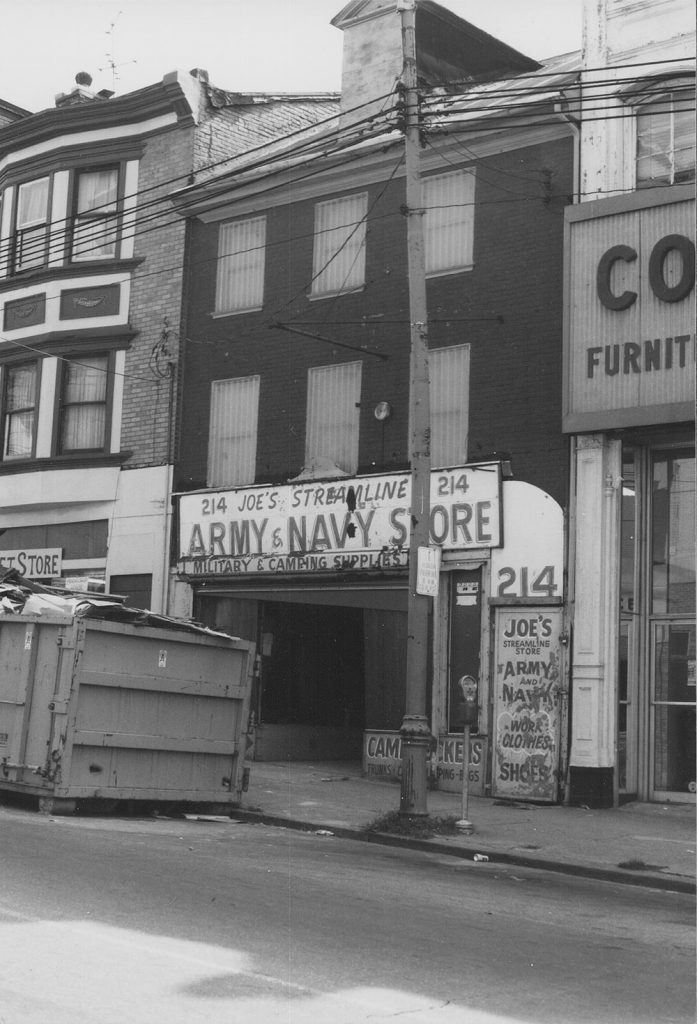
‘Three years later, Dominguez and his partner, James C. Welch, privately purchased and renovated a property at 214 N. Market Street, avoiding the homophobic response from city officials by using their own individual names. The partners, who also founded GLAD in 1982 as well as the Delaware Lesbian and Gay Health Advocates (DLGHA) in 1984, would use the property both as their home and the LGBTQ+ community center. DLGHA originated as GLAD’s Health Issues Committee and served as the Delaware’s first statewide AIDS Service Agency.
The three-and-a-half story, Flemish bond brick and painted building itself was originally constructed around 1890. It was listed in the National Register of Historic Places in May 1980 as a contributing property in the Lower Market Street Historic District.
‘In 1985, an archaeological excavation of the outdoor courtyard revealed the existence of an 18th century privy. Throughout 1986, the year Dominguez and Welch purchased the property, they spent over $140,000 on extensive renovations including exterior restoration of the facade and interior work such as renovating the fourth-floor/attic into the couple’s apartment.
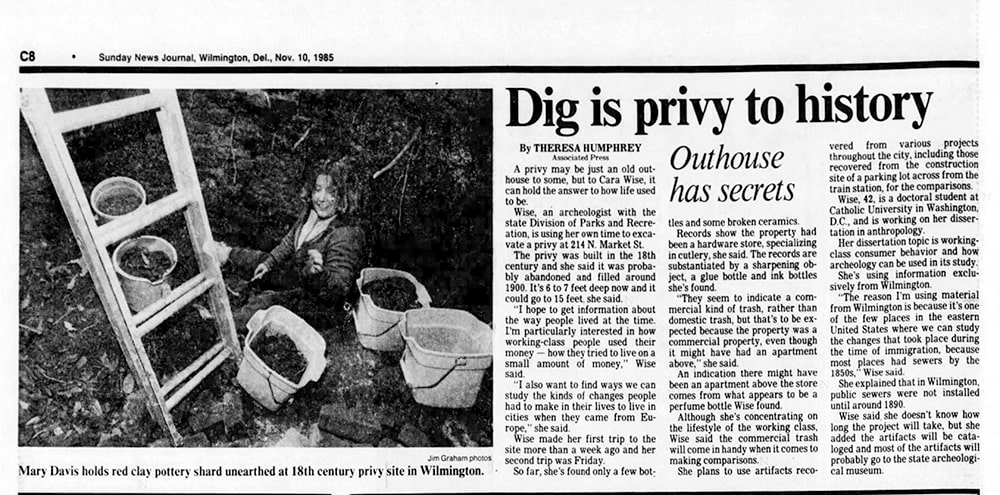

‘Upon completion of renovations, the center opened to the public as the Griffin Community Center. The couple named the new community resource after the mythical griffon, a creature with a bird’s head and a lion’s body. They found inspiration both from Thomas West, the English governor of Virginia also known as Lord De La Warr (1576-1518), for whom Delaware is named, as it was his heraldic animal, and because in folklore griffins are known as protectors and defenders. Thus, the name Griffin Community Center is rooted in both Delaware history and the desire to provide a safe space for queer Delawareans to build community and access to resources.
‘”Griffin Community Center’s permanent offices were used by GLAD, DLGHA, and as a meeting space for the Metropolitan Community Church. The GLAD office contained the gay/lesbian hotline while DLGHA managed the AIDS hotline. A courtyard in the rear of the property was used for fundraisers and as a meeting space for Pagan groups. The downstairs “function space” was rented out for personal events, discussion groups, and meetings.
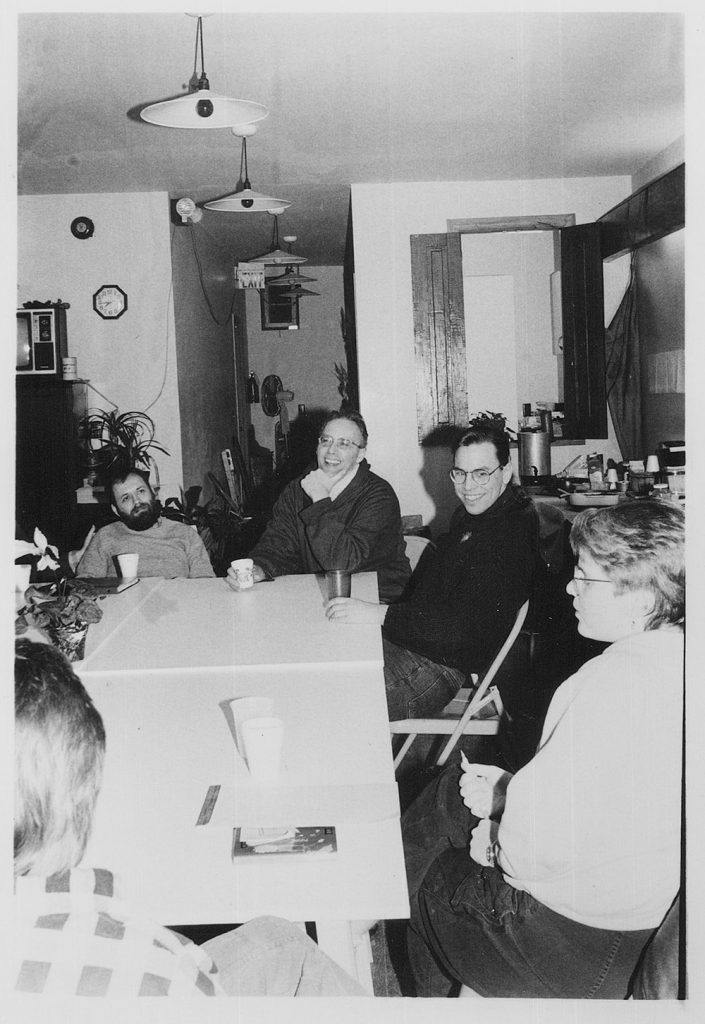
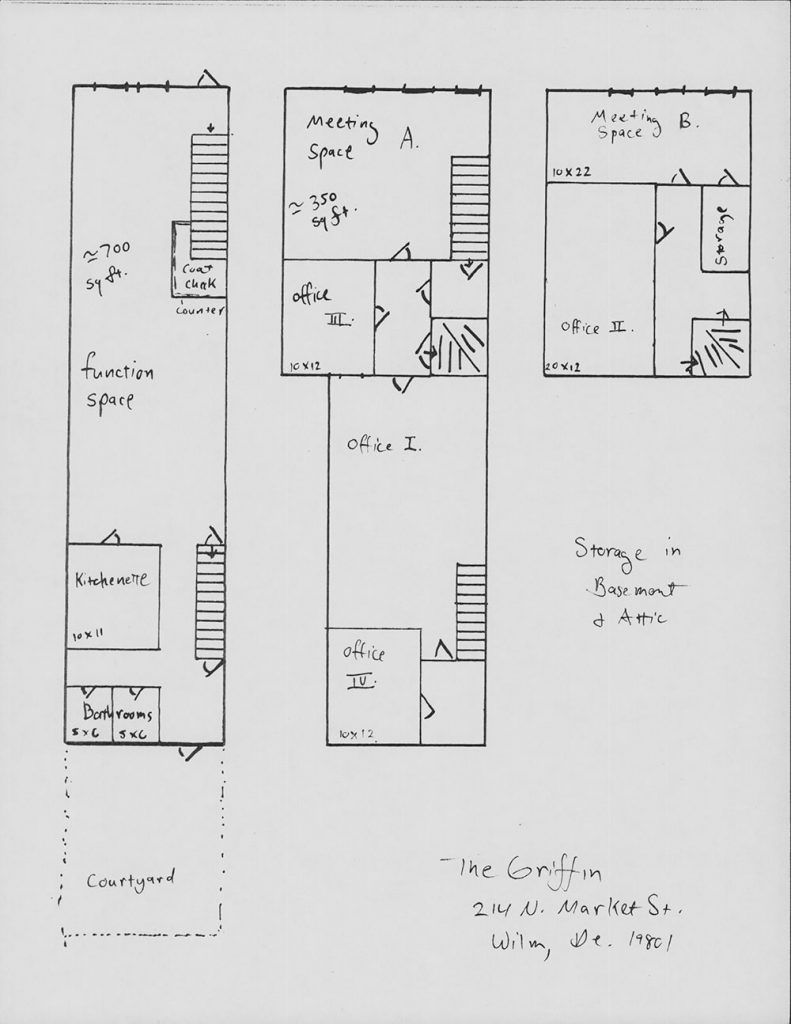
The center allowed many community groups focusing on underserved populations to use its space. For example, when there was a fire at the local Sunday Breakfast Mission and the group could no longer serve Sunday meals, it used the downstairs function space at Griffin Community Center to feed people every weekend for about five months. The Sunday Breakfast Mission, which serves men, women, and children in need of shelter, brought in many heterosexual people who may have not otherwise stepped inside the center. Dominguez and Welch recalled cooking the meals in the third-floor kitchen and carrying the tubs of food down to the function space.
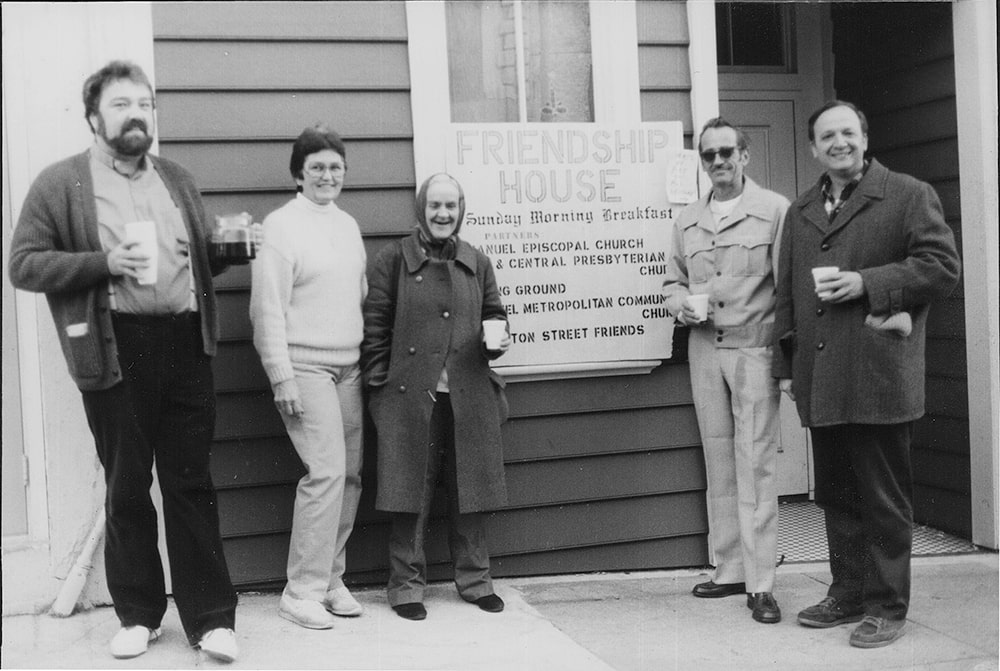
‘”Numerous twelve-step program groups like Gay-AA and Gay-Narcotics Anonymous utilized the center as well. Dominguez and Welch noted in a 2023 oral history interview with the Delaware Division of Historical and Cultural Affairs that the queer community has suffered high rates of substance abuse for a variety of reasons. Since bars were typically the only place to meet other queer people back in the 1970s and 1980s, and compounded by the discrimination that queer people face daily, heavy and continuous drinking or drug use led many queer people to experience substance abuse disorder. “Gay AA” groups began forming because, as Dominguez said, “if you try to go to an AA group or an NA group that isn’t queer-friendly, how are you possibly going to be able to share anything that’s useful or productive for your recovery process?”
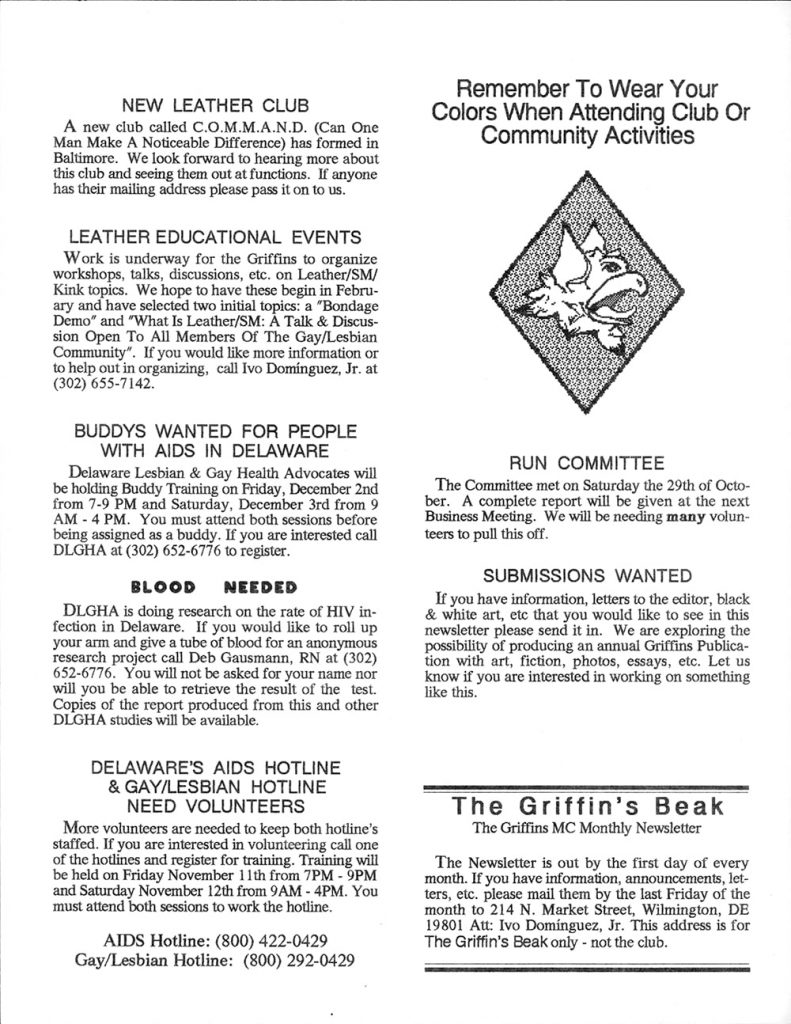
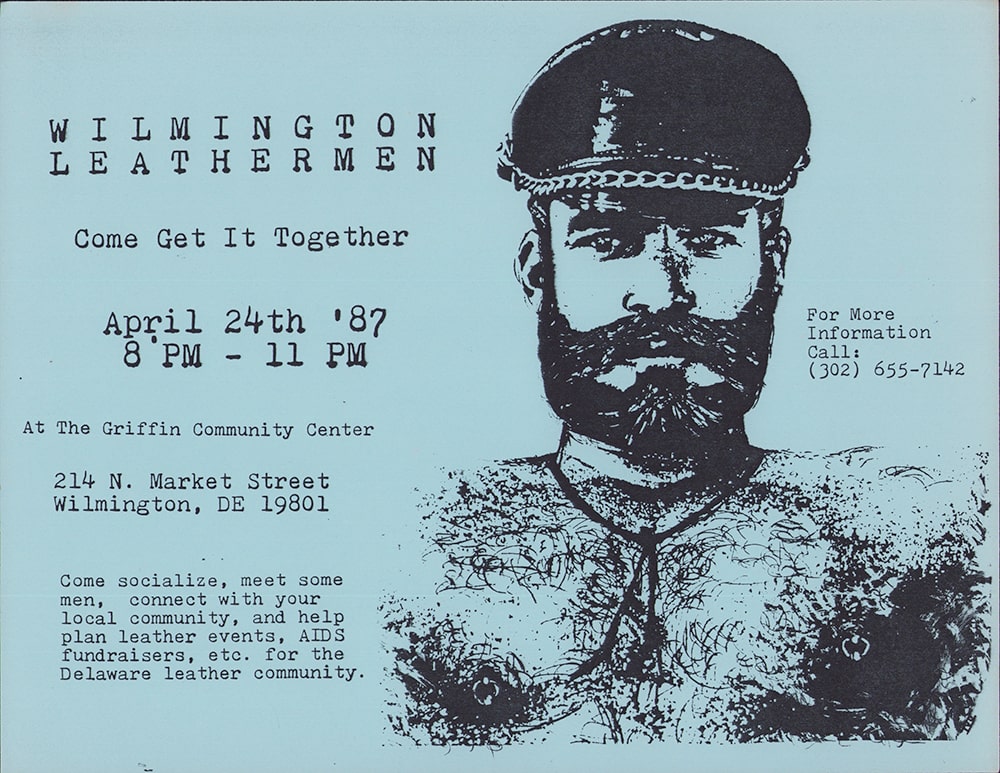
‘The center also hosted speakers on various topics and HIV/AIDS education programs as well as free, anonymous HIV/AIDS testing at a time when the Delaware Division of Public Health was not adequately addressing the HIV/AIDS crisis in the state. A volunteer-run, monthly newsletter called The Diamond Edge covered gay and lesbian issues from the Griffin Community Center and listed local LGBTQ+ resources. The Griffin M.C. (motorcycle club), a leather, fraternal group for queer men, also hosted social and community service events from the center. The Griffin M.C. even had its own newsletter, The Griffin’s Beak, released the first day of every month and contained announcements, community service opportunities, and calls for volunteers.
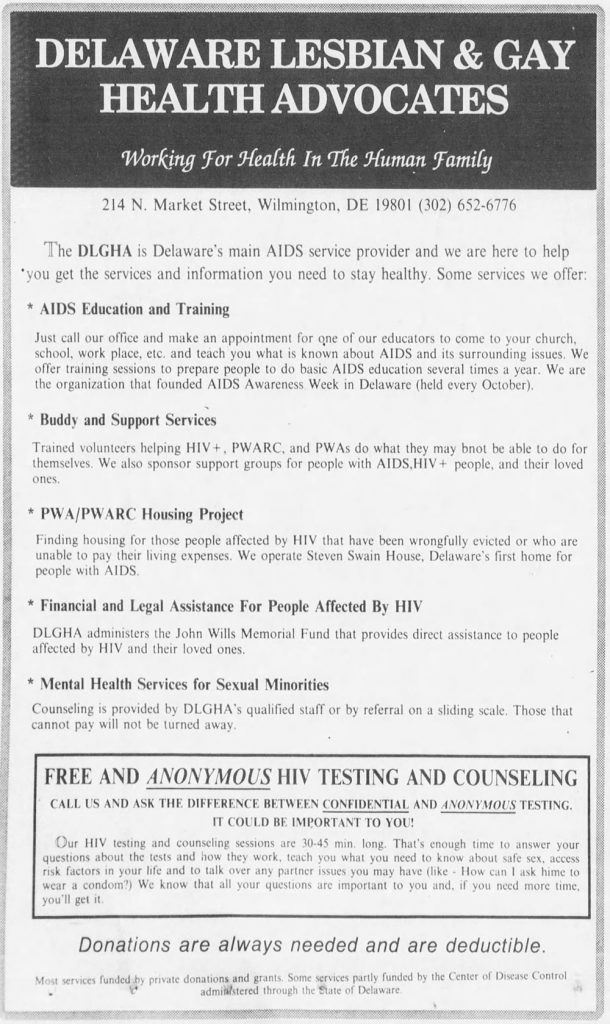
‘”When asked in a 2023 oral history interview with the Division of Historical and Cultural Affairs about what it was like living on the top floor of this busy community center, Welch said it was “both a good and terrible thing.” Dominguez added, “The good part was that I, we, could ramble down the steps and we’d be in the midst of everything. That also meant we could never get away.”
“Griffin Community Center closed in the spring of 1990. Dominguez and Welch recalled feeling completely “burnt out” from all of the gay/lesbian activism and later HIV/AIDS activism they had been engaged in since 1978. Dominguez remembered going to sixty to seventy funerals each year for a period of time, which left them drained of the mental energy and volunteers needed to continue operating the community center. Additionally, DLGHA underwent a change that involved its offices leaving Griffin Community Center, and ultimately changed its name to AIDS Delaware in 1995. Dominguez and Welch sold their property and moved to a rural area of Georgetown, in southern Delaware, where they reside today.
The building was demolished in 2019 for the construction of a new multi-story, rental residential building and parking garage.
Photos Courtesy: Courtesy of Ivo Dominguez Jr. and The News Journal, July 30, 1989, via Newspapers.com
Sources:
- “Details in Delaware: Celebrating Pride,” Delaware Division of Historical and Cultural Affairs, posted in June 2022
- ‘”Gorenstein, Nathan, “City Says Gay Alliance Can’t Use West St. Site,” The Morning News (now The News Journal), November 30, 1983
- “Halberd,” Historic Jamestowne website, accessed in 2023
- Ivo Dominguez Jr. and James Welch oral history interviews with the Division of Historical and Cultural Affairs, 2023
Explore Other Places
-

The Renegade
4274 Coastal Highway, Rehoboth Beach, DE
A once popular gay bar, restaurant, and resort at the Delaware beaches.
-
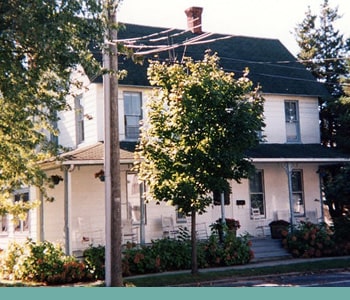
Rehoboth Guest House
40 Maryland Avenue, Rehoboth Beach, DE
A historically queer-friendly guest house that still welcomes visitors today.
-
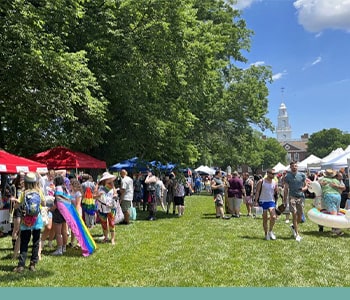
Legislative Hall and Legislative Mall
411 Legislative Avenue, Dover, DE
The site of Delaware’s state capital building and the outdoor location of large, annual LGBTQ+ festivals.
-
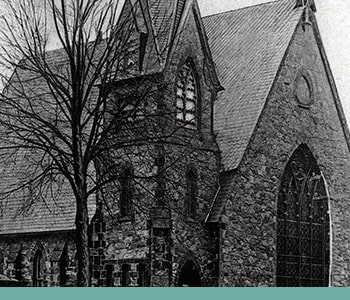
Daugherty Hall at the University of Delaware
17 W. Main Street, Newark, DE
A gathering place for all and where the University of Delaware’s Gay Student Union hosted its weekly coffeehouses.
-
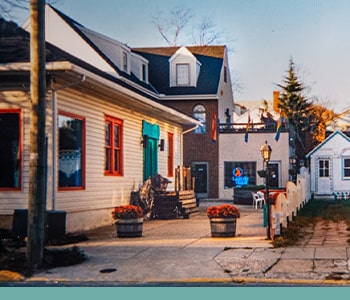
CAMP Rehoboth Community Center
37 Baltimore Avenue, Rehoboth Beach, DE
A longstanding LGBTQ+ community center in Sussex County.


